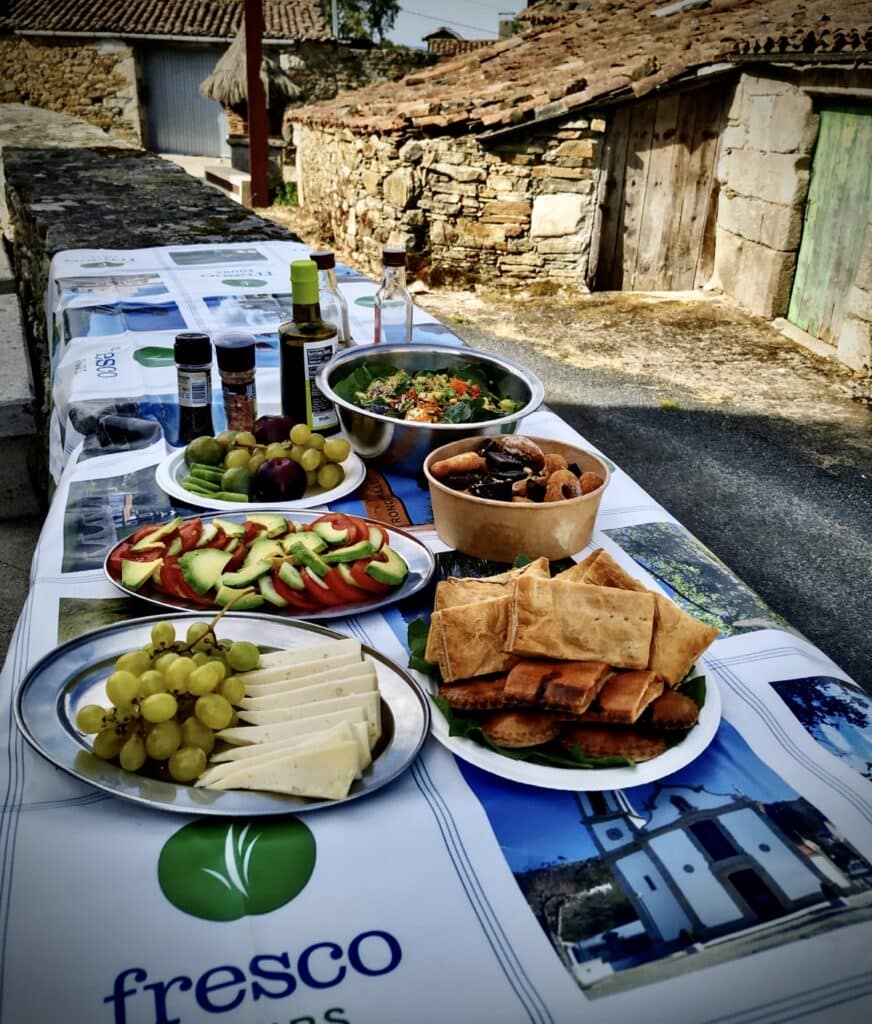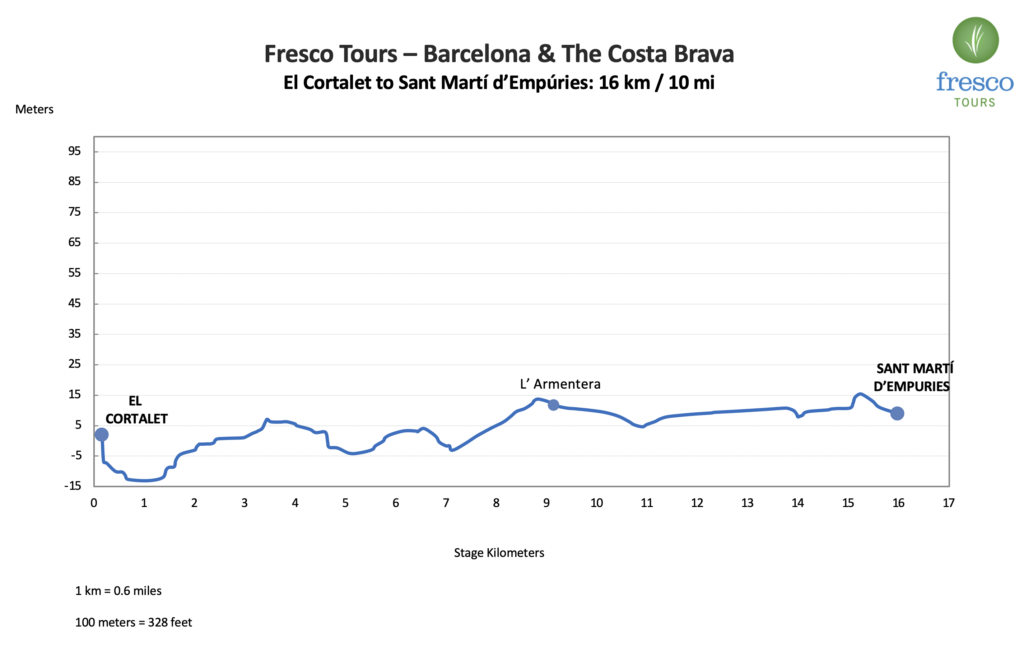Today we explore and walk from Sant Martí d’Empúries to Aiguamolls de l’Empordà.

Sant Martí D’Empúries
The remains of the 13th-century castle, ancient walls, and late gothic Cathedral in this medieval village stand witness to its former importance. Sant Martí d’Empúries was home to the first Greeks, who came to the Iberian Peninsula in the 6th century BC and settled in what was then a small islet before founding the bigger Emporium close by.
In the 2nd century BC, the Romans also chose Emporium as their main settlement in the area, founding the new city of Emporiae neighboring the Greek city. After the fall of the Roman Empire, both cities were slowly abandoned, and Sant Martí d’Empúries became the capital of the medieval county of Empúries, becoming the Episcopal See in the 6th century. In the 11th century the capital was transferred inland to Castelló d’Empúries in an attempt to protect the county’s capital from its exposure to the Mediterranen Sea.

Apple Orchards
Around the villages of l’Armentera and Sant Pere Pescador, travellers will discover an extensive area of apple orchards. Self-sufficient agriculture has a long history in the fertile lands of L’Empordà but when the farming cooperatives were formed in the 1960s and 70s, the local farmers increased their production. Today under the umbrella of the EU Geographical Indication (GI), 25% of the 8,000 tons produced are exported around the world. The terrain and climate are ideal for large-scale production of Golden, Red Delicious, Gala and Granny Smith apples.
Sant Pere Pescador
Surrounded by wetlands and apple orchards, the village of Sant Pere Pescador is the center of an extense playground for nature lovers. The tranquil last few kilometers of the river Fluvià flow through the village to the sea where we can easily spot otters, tortoises, storks and other wildlife.
Kayaking is great way to explore this beautiful river area. In the 7-kilometer-long beach, kitesurfers and windsurfers find a paradise for their sport, and cyclists and hikers can enjoy countless kilometers of flat trails along the river, coast and apple orchards.
Every summer, thousands of tourists come to Sant Pere Pescador to stay in the camping facilities on the beachfront. These campsites were built on the wetlands in the 1960s when the area was not yet protected and as a part of the Spanish strategy to attract tourism at any cost. From then on, tourism became the main asset for the village alongside the important apple industry.

Aiguamolls de l’Empordà
Aiguamolls de l’Empordà is a protected Natural Park, a natural wetland area located in the northeastern part of Catalonia and featuring diverse ecosystems, including marshes, lagoons, wetlands, and salt flats. The region is situated near the town of Castelló d’Empúries, between the Gulf of Roses and the foothills of the Pyrenees mountains.
The wetlands are renowned for their rich biodiversity and ecological importance. They provide habitat for a wide variety of birds, including both resident and migratory species, it is a crucial stopover for many birds during their migration routes.



















